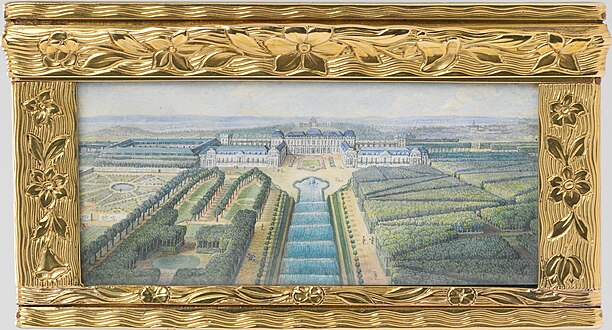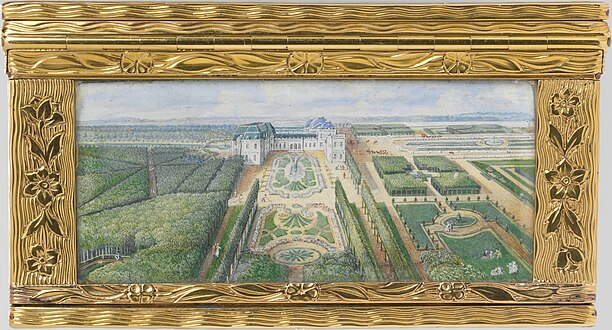|
Château de Chanteloup
The Château de Chanteloup was an imposing 18th-century French château with elaborate gardens, compared by some contemporaries to Versailles.[1] It was located in the Loire Valley on the south bank of the river Loire, downstream from the town of Amboise and about 2.3 kilometres (1.4 mi) southwest of the royal Château d'Amboise. From 1761 to 1785 Chanteloup belonged to King Louis XV's prime minister, the Duke of Choiseul. The château was mostly demolished in 1823, but some features of the park remain, notably the Pagoda of Chanteloup, a significant tourist attraction.[2] HistoryOriginsIn the 16th century the site was nothing more than a tenanted farm, but it was elevated to a fief in January 1668. François le Franc, a fruit seller to the Duke of Alençon (youngest son of Henry II of France and Catherine de Médicis), purchased it on 7 June 1583 and erected a house with a chapel. He became the mayor of Amboise in 1588. Claude-Arnoul Poncher, who acquired the property by his marriage to Marie-Madeleine le Franc (daughter of François le Franc, grandson of François le Franc, the fruit seller), sold it on 21 October 1695 to Louis le Boultz, the Grand Master of Waterworks and Forests of Touraine, Anjou and Maine.[3] Around 1700 Louis le Boultz created large, well-ordered gardens and added other structures, so that it was no longer a simple country house.[4]
1708–1761: D'AubignyCreation of the châteauOn 22 February 1708, Louis Le Boultz sold the house and seigneury of Chanteloup to Jean Bouteroue d'Aubigny, who also acquired the office of Grand Master of Waterworks and Forests of France for the département of Touraine, Anjou and Maine. D'Aubigny was the secretary for the Princesse des Ursins from 1701 to 1714, a period when she was very influential at the court of Philip V of Spain, the grandson of Louis XIV. D'Aubigny hired the well-known French architect Robert de Cotte in 1711 to remodel the house into a château. Robert de Cotte also worked on the Princess's apartments at the Royal Palace in Madrid and on designs for the Spanish king's country estate on the outskirts of Madrid, the Buen Retiro. The Château de Chanteloup was probably intended for her future use, but she was never to see it. At her death in 1722, as her sole heir, d'Aubigny retained sole possession of the château and its park.[6] D'Aubigny's focus in 1711, when construction began, was on Spain and the south. Robert de Cotte modified the central part, the corps de logis and the two pavilions at its ends (most of which already existed), and added the lateral wings flanking the cour d'honneur, a design typical of a château, so that the ensemble faced south. The principal entrance to the forecourt leading to the château was on the south side, on the road to Spain.[7] There was a passageway from the cour d'honneur through the west wing to the service court (basse cour) and stables on the west.[8] The remodeling included the creation of an east-facing gallery in the east wing and a chapel in the northwest corner, both with a project of decoration entrusted to Henri de Favanne, d'Aubigny's favorite painter, who had already worked on d'Aubigny's Parisian hôtel.[9]
Creation of the French formal gardensD'Aubigny also extended and enhanced the gardens and the park, which due to the terrain and the river were mostly to the south. The park was divided into numerous geometrically arranged groves of tall trees (bosquets), bordered by alleys lined with a variety of species of trees, and decorated with ornamental ponds. It was enclosed on the east, west, and south by a wall and on the north by a moat, and encompassed an area of about 500 arpents (380 hectares, 940 acres).[11] D'Aubigny died in the Château de Chanteloup in April 1732.[4] Saint-Simon, who died in 1755, described Chanteloup in the period after d'Aubigny's death, as "one of the most beautiful and singular places in all France, and the most superbly furnished."[12] A plan of 1761 from the Municipal Library of Tours shows gardens around the château in the formal French style, perfected by André Le Nôtre in the latter half of the 17th century, with parterres of broderie and lawn, galleries of topiary, extensive bosquets (especially to the east and southeast), water basins, tree-lined paths and kitchen garden (potager) on the west side, south of the stables and other service buildings.[13]
1761–1785: The Duke of Choiseul Grand ParkThe Marquise d'Armentières, a descendant of d'Aubigny, sold the château in 1761 to King Louis XV's prime minister, the Duke of Choiseul, who also acquired adjoining land, increasing the size of the estate to 6,000 arpents (4,600 hectares, 11,000 acres).[16] For comparison, the gardens and park of Versailles, when they reached their greatest extent under Louis XIV, covered an area of 2,473 hectares (6,110 acres).[17] A 1761 general site plan, from the French National Archives in Paris, shows that one of the first changes Choiseul made was to cut numerous tree-lined avenues and alleys in complex geometric patterns in the newly acquired Forest of Amboise to the south of the château, creating a Grand Park. Seven of the avenues converge on the half-moon (demi-lune) parterre of the Spanish Gate, forming a classic French patte d'oie (goose-foot pattern), a feature seen at several grand French châteaux of the 17th century, including the Château de Richelieu, Vaux-le-Vicomte, and Versailles.[18] Master planChoiseul engaged the architect Louis-Denis Le Camus to modernize and enlarge the château.[19] A master plan (grand dessein) was developed which was never to be completely realized.[20] A version of 1761 at the Bibliothèque nationale de France shows numerous proposed modifications and additions to the château of Robert de Cotte.[21] For example, this plan shows a theatre wing running east from the southern end of the east lateral wing, which is not seen in numerous later representations of the château. Other features, which were realized in one form or another, included additional courtyards, stables, and service buildings to the west of the château. Six miniature paintings by Louis-Nicolas van Blarenberghe dated 1767, which decorate a gold snuffbox, show the architectural composition as intended by Choiseul and his architect, such as the theatre wing, rather than that which had actually been built.[20]
North facade and entranceIn 1765, one of the additions actually executed was the extension of the north facade to the east and west with two 9-bay, open peristyles, recalling the Grand Trianon at Versailles. Each was topped with a promenade enclosed with balustrades decorated with ornamental vases and terminated with rectangular pavilions, the one on the east with a Salle des Bains (Bath Hall), and the one on the west with a chapel. Each of the matching pavilions was raised by one storey and covered with a terrace with a balustrade.[22]
Choiseul and Le Camus also shifted the main entrance to the north, allowing access from the road along the Loire by which carriages arrived from Amboise and Paris. The great entrance grille, the Grille Dorée (Golden Grille), was 12 toise (about 24 yards) in length and was flanked by two guard pavilions, which still exist. The gate was surmounted by the Choiseul arms. Although the Choiseul arms have been lost, the gate itself is now found at the prefecture of Indre-et-Loire in Tours. The forecourt contained a sunken central parterre, surrounded by a retaining wall (ha-ha), and in its center, an ornamental basin (pièce d'eau) with two water-jet fountains (jets d'eau). The carriage drive forked, passing to either side of the parterre and crossing two parallel bridges over the moat into the entrance court, which had a long central parterre with broderie of cut grass and low bands of flowers and a circular central ornamental basin with a single jet d'eau.[23]
WaterworksThe gardens of the Petit Parc (Small Park) to the south of the château were modified very little but there was a significant exception: a long terraced cascade running from the demi-lune parterre of the former Spanish Gate to a pièce d'eau just to the south of the cour d'honneur. The demi-lune parterre itself was transformed into a lake.[24] The cascade is depicted in two of Van Blarenberghe's snuffbox miniatures and in a 1768 painting by Jean-Pierre Houël, part of a series of six overdoors for the music room of the château, of which four survive.[25]
Around 1770 another important water feature was added, a canal, leading to the south side of the demi-lune lake and aligned on the central axis of the château and the Grand Park. The canal is shown on a 1770 site plan attributed to Le Camus and is depicted in paintings by Louis-Nicolas Van Blarenberghe and Nicolas Perignon.[26] The demi-lune lake and the canal still exist, although the canal is filled-in and has become a lawn.[27]
Colonnades on the cour d'honneurColonnades were an architectural feature that seemed to please Choiseul.[28] Le Camus used them again to fill in the setback of one toise (about two yards) of the south facade of the corps de logis (facing the cour d'honneur) with a seven-bay colonnaded portico, including a central avant-corps of three bays with a wider set of steps (perron) leading down to the courtyard.[29] The portico can be seen in a view of the south facade of the château taken from the middle of the cascade, painted around 1770 by Nicolas Perignon.[30] In the center of the corps de logis, Le Camus created a large entrance hall, through which one could pass to reach the courtyard on the south, the cour d'honneur. To the left of the entrance hall was a series of three large rooms, and to its right a large dining room with windows facing north, rather than the cour d'honneur as before.[31]
Le Camus later added colonnades to two new pavilions extending and terminating the south ends of the lateral wings flanking the cour d'honneur.[32] The one attached to the east wing contained a complete apartment, comprising an entrance foyer, antechamber, grand chamber (with windows facing east), and on the south, a boudoir, office (cabinet), closet (garde-robe), and a staircase leading to the floor above. This apartment was used by Choiseul's sister, the Duchess of Gramont, when she came to visit. The old part of the east wing contained the apartment for the duke, a large gallery, and the apartment for the duchess, Louise-Honorine Crozat, daughter of Louis-François Crozat, marquis du Châtel, and heir to many of the Italian paintings from the collection of her great-uncle, Pierre Crozat. Some of these paintings were displayed in the gallery. The matching pavilion attached to the west wing contained the apartment of the officier de bouche (chef), an office and a laundry. The old part of the west wing contained a new kitchen (closer to the main dining room), offices, and the servants' dining room.[33]
Jardin anglo-chinois and pagodaIn December 1770, Louis XV banished Choiseul from court and ordered him to retire to Chanteloup. Before returning to Paris in 1775, after the lifting of his exile by Louis XVI, Choiseul introduced a large, informal jardin anglo-chinois (replacing the French formal gardens east of the main axis of the château) and commissioned the construction of what is now the former château's most famous feature, the seven-storey, 44 metres (144 ft)-tall Pagoda of Chanteloup, built in 1775 by Le Camus.[36] The pagoda was located just to the north of the demi-lune lake. The garden cascade flowing down to the pièce d'eau near the cour d'honneur was suppressed at this time and transformed into a bowling green (boulingrin), apparently due to a lack of sufficient water to keep it flowing.[37]
1785–1823: Decline and demolitionAfter Choiseul's death in 1785 the château was purchased by the Duke of Penthièvre, who added to the collection of paintings, most notably works by François Boucher. The French Revolution began a period of decline, the property becoming a public good in 1797 and suffering abandonment until 1802, when it was bought by the chemist-industrialist Jean-Antoine Chaptal.[39] Chaptal, a rich man, was minister of the interior under Napoleon and became a member of the French Senate in 1804. He expended a considerable amount of money restoring the property and in 1808 declared "it was fit to receive a king."[40] He raised sheep, distilled brandy, and experimented with beet farming and the large-scale production of beet sugar.[41] In order to pay heavy debts owed by his son from investments in the chemical industry,[40] Chaptal decided to sell. The Duke of Orléans purchased the section of the park with the Pagoda, but declined to buy the entire domain. In 1823 Chaptal sold the remainder of the park and gardens and the château itself to a consortium of goods merchants, the "bande noire" ("black bandits"), including the socialist banker Barthélemy Prosper Enfantin and the speculator Baudrand, acting for the wealthy Alfred de Montesqiou-Fézensac. The group dismantled most of the château, dispersing architectural souvenirs throughout the Touraine, many of which can still be seen in public and private places.[42] 1823–present: Domaine de ChanteloupOnly some of the park, two pavilions, a semicircular ornamental pool, and a few other garden features survive,[43] the most important of which is the Pagoda, restored in 1910 by architect René Édouard André (son of the landscape architect Édouard François André).[44] The site, the Domaine de Chanteloup, was designated a French monument historique in 1937.[45]
Choiseul-Chanteloup snuffboxThe château and its gardens were depicted by Louis Nicolas van Blarenberghe in six miniatures (1767, Metropolitan Museum of Art, commissioned by the Duke of Choiseul), which were used to decorate a gold snuffbox.[46] The paintings show the architectural composition as intended by Choiseul and his architect, rather than that which had actually been built.[20]
Notes
Bibliography
|
||||||||||||||||||||||||||
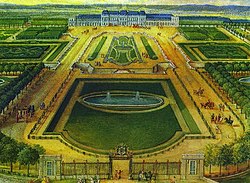

!["General perspective view of the house, courtyard, service courtyard, gardens, woods, vineyards, and park of Chanteloup from the entrance side with the environs, all situated near Amboise, and view toward the Loire River" (1708)[5]](http://upload.wikimedia.org/wikipedia/commons/thumb/f/f3/Ch%C3%A2teau_de_Chanteloup%2C_1708_perspective_view_%E2%80%93_Gallica_2007_%28composite%29.jpg/643px-Ch%C3%A2teau_de_Chanteloup%2C_1708_perspective_view_%E2%80%93_Gallica_2007_%28composite%29.jpg)

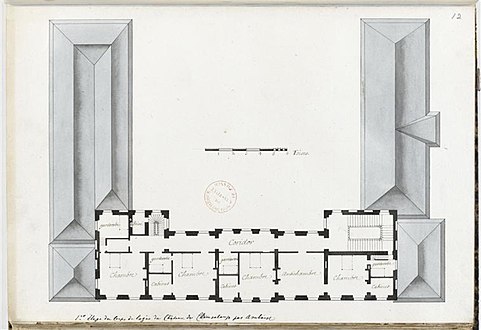
![The Battle of Almança or The Battle of Villaviciosa, study by Henri de Favanne for the Grande Galerie (private collection)[10]](http://upload.wikimedia.org/wikipedia/commons/thumb/e/ec/Henri_Antoine_de_Favanne._La_bataille_d%E2%80%99Alman%C3%A7a_ou_La_bataille_de_Villaviciosa_%28v._1714%29.jpg/535px-Henri_Antoine_de_Favanne._La_bataille_d%E2%80%99Alman%C3%A7a_ou_La_bataille_de_Villaviciosa_%28v._1714%29.jpg)
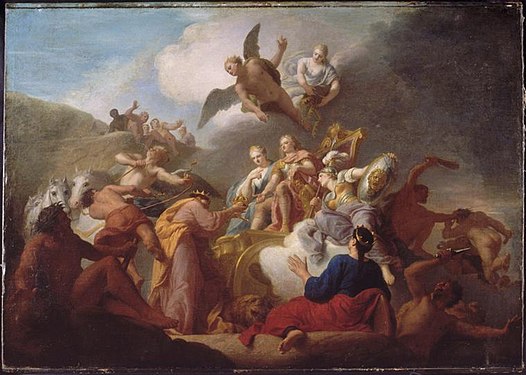

![Detail from a plan of 1761 (north to the left), showing the French formal gardens (Bibliothèque Municipale, Tours)[14]](http://upload.wikimedia.org/wikipedia/commons/thumb/e/e5/Chanteloup-_Plan_g%C3%A9om%C3%A9tral%2C_1761_%E2%80%93_Biblioth%C3%A8que_municipale_Tours_%E2%80%93_Grateaux_2015_p._70_%28detail%29.jpg/614px-Chanteloup-_Plan_g%C3%A9om%C3%A9tral%2C_1761_%E2%80%93_Biblioth%C3%A8que_municipale_Tours_%E2%80%93_Grateaux_2015_p._70_%28detail%29.jpg)




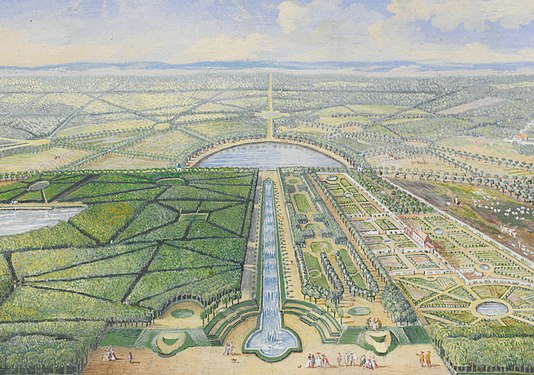


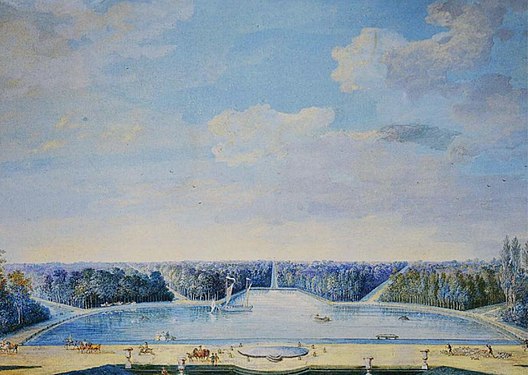

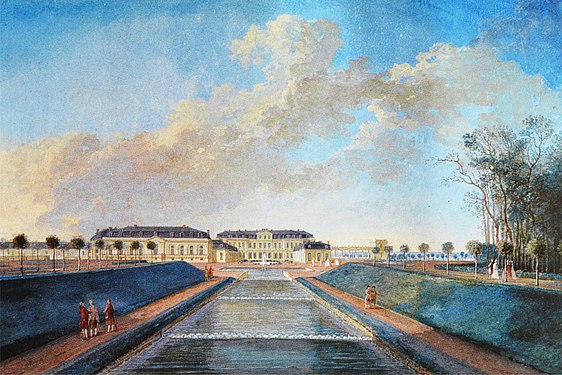

![Plan of the ground floor of the Château de Chanteloup (north at the bottom) with the colonnades added by Louis-Denis Le Camus to the cour d'honneur[34]](http://upload.wikimedia.org/wikipedia/commons/thumb/a/aa/Ch%C3%A2teau_de_Chanteloup%2C_floor_plan_by_Chateigner_%E2%80%93_Andr%C3%A9_1928%2C_after_p._44_%28Fig._7%29.jpg/291px-Ch%C3%A2teau_de_Chanteloup%2C_floor_plan_by_Chateigner_%E2%80%93_Andr%C3%A9_1928%2C_after_p._44_%28Fig._7%29.jpg)
![View of the south (garden) facade with the colonnades and pavilions added by Le Camus (undated drawing from the Bibliothèque nationale de France)[35]](http://upload.wikimedia.org/wikipedia/commons/thumb/b/bb/Ch%C3%A2teau_de_Chanteloup_%28Indre-et-Loire%29%2C_c%C3%B4t%C3%A9_du_jardin_%E2%80%93_Gallica_2007_%28adjusted%29.jpg/677px-Ch%C3%A2teau_de_Chanteloup_%28Indre-et-Loire%29%2C_c%C3%B4t%C3%A9_du_jardin_%E2%80%93_Gallica_2007_%28adjusted%29.jpg)


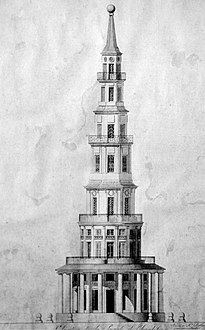

![View of the pagoda from the grand salon of the château (undated drawing from the Bibliothèque nationale de France)[38]](http://upload.wikimedia.org/wikipedia/commons/thumb/7/71/Vue_de_la_pagode_de_Chanteloup%2C_prise_du_grand_salon_du_ch%C3%A2teau_%E2%80%93_Gallica_2007_%28adjusted%29.jpg/536px-Vue_de_la_pagode_de_Chanteloup%2C_prise_du_grand_salon_du_ch%C3%A2teau_%E2%80%93_Gallica_2007_%28adjusted%29.jpg)
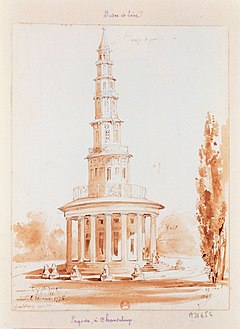



![Northern view of the château from the entrance screen, the "Grille Dorée"[47] (snuffbox top)](http://upload.wikimedia.org/wikipedia/commons/thumb/f/fa/Choiseul_box_%28Chanteloup%29_2_top_%22View_of_the_Ch%C3%A2teau_from_the_Entrance_Screen%22_Metropolitan_Museum_of_Art_DP170000_%28cropped%29.jpg/442px-Choiseul_box_%28Chanteloup%29_2_top_%22View_of_the_Ch%C3%A2teau_from_the_Entrance_Screen%22_Metropolitan_Museum_of_Art_DP170000_%28cropped%29.jpg)
